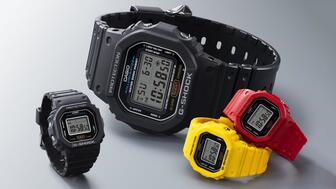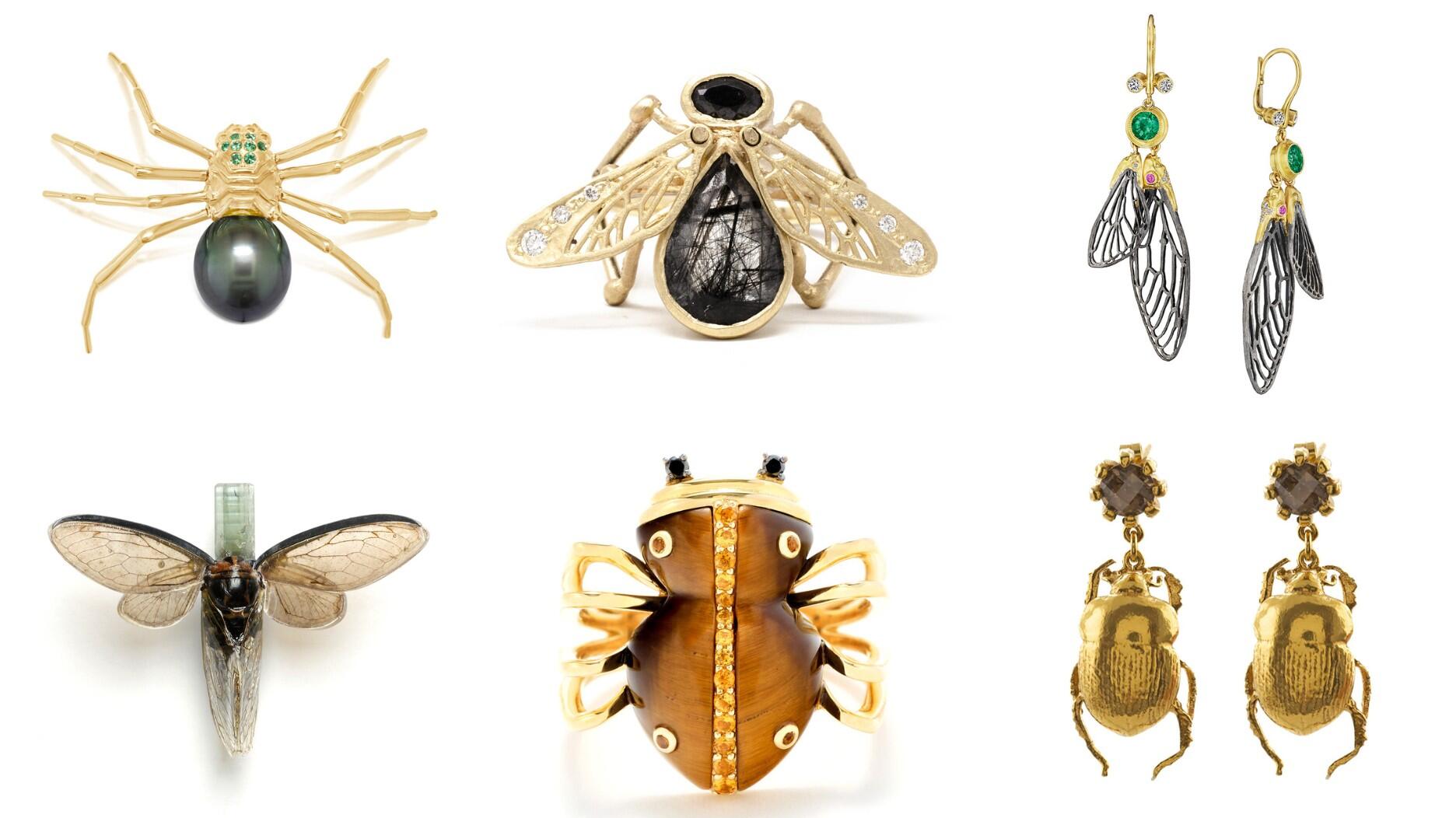In its annual report, Pinterest noted an increase in searches for brooches, heirloom jewelry, and ‘80s luxury.
Where Victoria’s Secret Went Wrong
The once-mighty retailer’s recent struggles are a testament to the importance of listening to your customers, Associate Editor Lenore Fedow writes.

The last time I entered a Victoria’s Secret store was a few years ago. My direct deposit had just hit my bank account, and I was ready to shop.
I bypassed a row of sequined bustiers and piles of frilly things to head into the more casual section of the store, where I found myself flipping through hanger after hanger, searching in vain for my size.
I knew I was at the very limit of the retailer’s size range and that not all styles were available in my size, but surely, I thought, there was something for me somewhere in the store.
Finally, I asked an employee where I could find something in my size. She pursed her lips and gave me a judgmental once-over.
“Online,” she spat.
I suppose my face gave away my disappointment, and she offered to check in the back for me.
You could’ve blown dust off the beige grandma-looking bra she brought back, and it had a $50 price tag hanging off it. I thanked her for trying and left empty-handed.
All of this is why when I heard last week that parent company L Brands was selling Victoria’s Secret amid declining sales, I was not surprised and, truthfully, a little giddy.
Putting my pettiness provoked by past experiences aside, here’s where Victoria’s Secret went wrong, and why all retailers should consider the comedown of this once-mighty retailer a cautionary tale.
It offered limited options.
After I parted ways with Victoria’s Secret, I began scoping out a new place to buy bras, and I found myself in Lane Bryant, a retailer that focuses on plus-sized clothing and, interestingly enough, once was owned by L Brands.
At a size 14, I’m at the low end of the store’s clothing offerings, but its in-store Cacique intimates brand was a treasure trove.
There was no boring beige here. Every color, print, size and style I could imagine was there for the taking, hung up neatly on a rack, not buried beneath a tower of extra-smalls or hidden away in the back, collecting dust.
The bras were beautiful and comfortable, and after seeing what the experience could be, I happily handed over my money, walked out with a full bag and never looked back.
The moral of the above bra-shopping anecdote is one retailers should already know: If you’re not providing me with what I want, I will go elsewhere.
Whether we’re talking about lingerie or jewelry, consumers are demanding more options.
In
A survey The Knot released late last year found that nearly half of new rings purchased for an engagement included some custom details.
With a slew of retailer options available to shoppers, the “take-it-or-leave-it” attitude toward customers just isn’t going to cut it anymore.
It refused to evolve, even in the face of increasing competition.
It seems I was not the only Victoria’s Secret shopper who went elsewhere.
The lingerie brand had a rough holiday season, with in-store sales down 8 percent year-over-year and same-store sales for both the in-store and online channels slipping 1 percent.
Parallel to the jewelry world, there were a ton of online brands, like Adore Me and ThirdLove, ready and willing to scoop up the customers Victoria’s Secret was leaving out by limiting its sizes and not stocking enough larger sizes in store.
Understandably, not every brand can cater to every shopper, but plus-size customers are not a niche.
The average American woman wears a size 16 to 18, according to data from Coresight Research, and the U.S. plus-size market is expected to grow to $24 billion in by 2020 with an annual growth rate nearly double that of the total clothing market.
In malls, where the vast majority of the retailer’s stores are located, foot traffic has been slowing, prompting retailers to think up creative ways to bring in customers and keep them coming back.
Victoria’s Secret is lacking in innovation at a time when it is needed most, offering customers only the occasional coupon and promotion.
New competitors, meanwhile, are thinking outside of the box.
Adore Me, an online lingerie brand, offers sizing from petite to plus, with the option to join a subscription service and receive a new bra and panty set every month, as well as a rewards program to earn free bras.
Victoria’s Secret has a rewards program, but it is available only to those who sign up for its store-brand credit card.
Even when the brand got it right, it found a way to go wrong.
The Victoria’s Secret swimsuit line, a noted favorite among fans of the brand, was discontinued in 2016, prompting an outcry for its return.
It was brought back in 2019, at a higher price point and in a narrow range of generic sizes—sizes XS to L rather than its previous sizing by bra size—and only available online, shutting out customers who prefer to try a swimsuit on in person, which could be an opportunity to boost foot traffic in its stores.
In terms of fashion trends, while Victoria’s Secret continued to push sex appeal, athleisure continued to grow in popularity, with more shoppers opting for comfort over sexiness.
Comfort and support, in fact, are the top priorities for U.S. women buying a bra for themselves while sexiness comes in eighth place, as per The Bra Evolution, a 2019 report from The NPD Group.
ThirdLove, another online intimates company, put the focus on comfort and offers 78 sizes, including half-cup sizes.
The company also answered the growing call for diversity in both representation and selection, offering its “nude” bras in a variety of earth tones to match a wide array of skin tones.
Victoria’s Secret, however, remained unbending in the face of change and committed a cardinal sin of retail—not listening to your customers.
It has a ‘you-can’t-sit-with-us’ problem.
While other brands were welcoming in more customers, Victoria’s Secret was giving off a less-than-friendly vibe.
Ed Razek, the brand’s former chief marketing officer, came under fire following a 2018 interview with Vogue in which he said that “no one had any interest” in plus-size models and that the brand’s annual fashion show would not include transgender models because “the show is a fantasy.”
For blogger Alysse Dalessandro Santiago of Ready to Stare, which shares her experience of being plus-size and a member of the LGBTQ community, the comments told everyone else what her communities had known for a while.
View this post on InstagramA post shared by Alysse Dalessandro Santiago (@readytostare) on Feb 18, 2020 at 3:01pm PST
The unspoken message from the brand’s limited sizing and posters plastered with thin models had made it clear: You’re not welcome here.
Razek’s comments insulting consumers who couldn’t shop there anyway likely wouldn’t have hurt the retailer’s bottom line, Dalessandro Santiago observed, but the impact was greater than that.
It was standard-sized customers, who have many shopping options available to them, that were pushed away, she said. They became uncomfortable when the brand’s long-time exclusionary message—heard loud and clear by others a long time ago—was finally spoken out loud.
Competitor ThirdLove hit back at the retailer via a full-page ad in the Sunday New York Times, signed by co-founder and co-CEO Heidi Zak.
“How in 2018 can the CMO of any public company—let alone one that claims to be for women—make such shocking, derogatory statements?” the letter stated, while criticizing the retailer for pushing an outdated narrative on what “sexy” should be.
At a time when retailers across industries were promoting inclusion and feeling good about who you are and how you look, Victoria’s Secret continued to shut out potential customers.
A December 2018 article in The Atlantic by Amanda Mull titled “Victoria’s Secret Has a Mean-Girl Problem,” summed up the retailer’s vibe perfectly.
“For years, Victoria’s Secret has been the brand equivalent of the stereotypical cool-girls’ table in a high-school cafeteria: hot, unfriendly, and definitely not interested in bolstering your self-worth,” Mull wrote.
It failed to act when aspirational became exclusionary.
Most shoppers still want to sit with the cool girls, but they want to see some new faces at the table.
“There’s this ongoing idea that the beauty we see in advertising should be aspirational,” blogger Dalessandro Santiago said.
“If brands really listened to consumers, they would see that customers want advertising that is relational.”
To her point, my experiences at Victoria’s Secret and Lane Bryant were like night and day, and feeling welcomed made all the difference.
The models on the in-store branding looked beautifully normal and the mannequins curved at more than the waist.
I could see myself in its products, not how I’d look in a fantasy or after I dropped 20 pounds, but right there and now, just as I was.
“Having an ad that is representative of your customer is the most important thing in advertising,” Dalessandro Santiago said.
Victoria’s Secret built its business model on aspirational beauty, she added, and when the tides turned away from that ideal, instead of taking that opportunity to be inclusive, they doubled down.
When it did change it was too little, too late.
Retailers striving for diversity and inclusivity should be mindful of looking like they’re just riding the wave.
“As consumers, it’s easy to tell when a brand is being diverse or inclusive for the purpose of just looking diverse or inclusive,” Dalessandro Santiago said.
People in underrepresented communities are wary of pandering, and it’s easy to suss out, she added.
This was arguably the case when Victoria’s Secret hired its first transgender model, Valentina Sampaio, and its first size 14 model, Ali Tate Cutler, only after public outcry.
When you compare Victoria’s Secret model lineup to, for example, Rihanna’s Savage X Fenty lingerie runway show last year, which featured women of all sizes, races, ethnicities as well as transwomen and disabled women, there is no comparison.
Victoria’s Secret’s annual televised fashion show, known for featuring almost exclusively thin, white models, was cancelled in 2019 due to dwindling audiences and growing public criticism while Rihanna’s show was well-received by critics and social media.
The lesson here, for all retailers: There is a difference between throwing one or two diverse models into a campaign and making a concerted effort to do better, and consumers can tell who means it.
How Independent Retailers Can Get Onboard
Small businesses are better at authenticity, Dalessandro Santiago said, and there’s less overhead in the way of projecting a message of inclusivity and diversity.
In addition to her blog, Dalessandro Santiago has experience as a small business owner, previously selling her own designs on her website.
“I was the CMO, CEO, CFO, I was everything. It’s not that hard to put a casting call out and find hundreds of people.”
For retailers looking to avoid pandering, she said, it’s crucial to make an ongoing effort to be more inclusive.
Show through action how you are investing in the communities, such as by casting LGBTQ models or hiring plus-size workers, she said.
In terms of diversity, it’s usually smaller businesses that set the tone, with larger businesses taking notice and following suit, she added.
Victoria’s Secret squandered that opportunity, remaining loyal to an outdated beauty ideal instead of to its customers.
With strong name recognition and a global presence, it was Victoria’s Secret’s market to lose, and it did indeed cede a huge chunk of business due to its unwillingness to change.
Though the brand still holds the largest slice of the $13 billion U.S. lingerie market, its share fell to 24 percent in 2018 compared with 32 percent in 2013, as per Euromonitor data.
Meanwhile, American Eagle’s Aerie brand, which is known for not retouching its models, doubled its piece of the pie during that same time period.
Victoria’s Secret fell to No. 13 on investment firm Piper Jaffray’s semi-annual Taking Stock with Teens survey in fall 2019 from its No. 5 spot in spring 2018, while American Eagle was in second place.
The lesson to be learned by retailers in any industry—remaining stubborn in the face of change will cost you market share and customers.
The Latest

Starting Jan. 1, customers can request the service for opal, peridot, and demantoid garnet.

The 111-year-old retailer celebrated the opening of its new location in Salem, New Hampshire, which is its third store in the state.

How Jewelers of America’s 20 Under 40 are leading to ensure a brighter future for the jewelry industry.

The new catalog features its most popular chains as well as new styles.


The filmmaker’s personal F.P. Journe “FFC” prototype was the star of Phillips’ recent record-setting watch auction in New York.

The new location in the Design District pays homage to Miami’s Art Deco heritage and its connection to the ocean.

Roseco’s 704-page catalog showcases new lab-grown diamonds, findings, tools & more—available in print or interactive digital editions.

Inflations, tariffs, and politics—including the government shutdown—were among consumers’ top concerns last month.

“Longtime favorite” presenters, as well as first-time speakers, will lead talks and workshops at the annual event in Tucson next year.

Silas Smith of Meridian Metalworks won the challenge with his pendant that blends Australian and American landscapes.

The sale of the 31.68-carat, sunset-hued stone was part of Sotheby’s first series of events and auctions in Abu Dhabi.

Most customers who walk into your store this month have made up their minds. Your job is to validate their choice, Emmanuel Raheb writes.

The collection features characters and motifs from Ukrainian folklore, including an enchanted mirror and a magic egg.

MatrixGold 3.11, the newest version of the jewelry design program, offers more flexibility, precision, and creative control.

The pavilion will be part of the 2026 JA New York Spring show, scheduled for March 15 to 17.

Kadet, a 1994 National Jeweler Retailer Hall of Fame inductee, helped grow the family-owned retailer in the Chicago area and beyond.

Billed as the world’s smallest wearable, Lumia Health’s new smart earrings have a health tracker subtly embedded in the back.

Don’t let those with December birthdays feel blue. Help them celebrate their month with blue zircon, turquoise, and tanzanite.

The new pink sapphire version of the piece dances with its wearer in the brand’s “Icons After Dark” holiday campaign.

A choice that’s generated a lot of commentary, Pantone says “Cloud Dancer” marks a fresh start and encourages relaxation and creativity.

The manufacturer’s holiday campaign features a gift guide filled with trending designs and jewelry that can be personalized.

The man was charged with theft, accused of ingesting the necklace while in a jewelry store in Auckland, New Zealand.

The Florida independent expanded its store from 8,000 to 14,000 square feet, fulfilling the vision of its late co-founder, Jim Dunn.

Sponsored by De Beers Group

The classic 5600 series G-Shock has been scaled down to about a tenth of its size, becoming a fully functioning watch ring.

The association’s annual conference and gala will take place Feb. 4, 2026, during the Tucson gem shows.




























